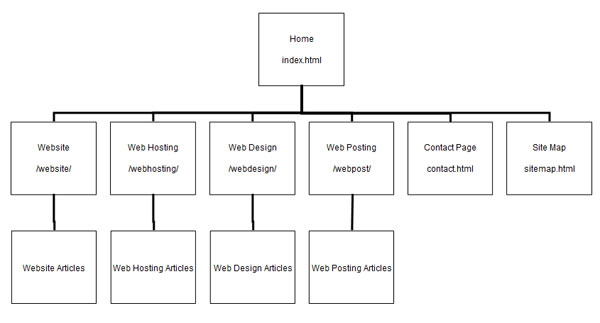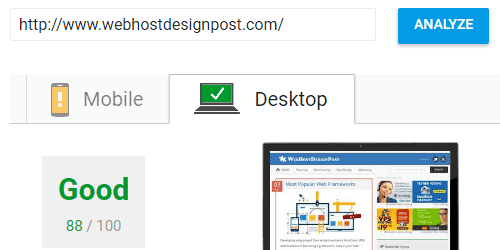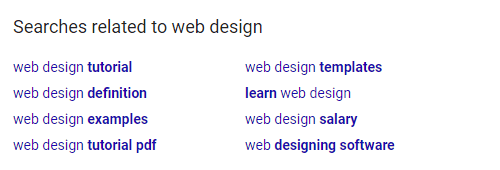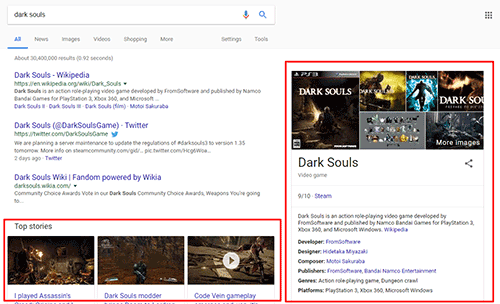In the past couple of years, we have seen a greater emphasis on user experience. With the growth of mobile devices with limited resources has contributed to this.
In the past, SEO was seen as something added to the site after the design was completed. Part of this was many sites were late in adopting these practices and had to be reviewed later. This approach was limiting and failed to address the core SEO to the site.

Various search engines (Google) keep changing their algorithms and punishing unethical practices.
The new approach emphasizes on SEO web design.
Now it's better to incorporate your ranking strategies in your site from the point of the design. This makes it easier to sustain your efforts without having to redo the site. Making it easier to adapt to any new search engine algorithms. This is a more effective way of attaining higher page ranking.
Website Hierarchy

This is one of the most overlooked elements of SEO. This is is important as it is a lot of work to change it after the fact. Your site hierarchy is the core of your website and provides vast opportunities for organic search.
There are three benefits of having a well-structured site.
1. You get to enhance the user's experience. Site hierarchy aids easy navigation that your users will appreciate the logical arrangement. With a clear message on informational topics.
2. A strong site hierarchy mean better crawling. When search engine crawlers visit your site they will have an easier time indexing your pages. Search bots don't always find all pages on your site. With a clear structure, this leads to better ranking.
3. Gain search result sitelinks. This is a great way to increase your clickthrough rate on search results.
A sitelink is when your main page along with the internal links show in the search results. This offers a number of advantages. It offers the visitors more relevant information. You also get to dominate the search results with your internal links.
These site links are automatically provided by the search engine. But having a clear hierarchy will increase your chances.
Friendly URLs

URLs are a great resource for SEO because of a number of factors. The approach to creating friendly URLs are to improve the user experience. The major factors to consider are the domain name, security, length, readability, and keyword.
The technical aspects are the domain name and security. If you are yet to create a website, you will need to select a major domain name. While this does not impact on the ranking, what it does is increase the credibility of your site. Domain names with .com, .net and, .org are the most common. Which makes them great to gain user's trust and likelihood.
On security, it is recommended to use a HTTPS connection. This is because it will use data encryption to secure your visitors from malware. You don't need to have this set up while designing your site, but should be implemented when your site goes live.
HTTPS is such an important topic that Google has made it a ranking factor.
Having a keyword in the URL is helpful in creating relevance to the search engine user. This is especially crucial if you are trying to optimize a page for a certain keyword.
Users pay attention to the URL when looking for pages containing relevant information. Readability of URL is important both for the user and search engines. It helps the visitors and search engines understand what the page is about.
Try getting URLs that read naturally. Sites with shorter URLs have also shown to rank higher. 50-60 characteristics are the ideal length for easy readability and better user experience.
Website Accessibility

There is much to cover to when it comes to web accessibility. It involves creating a website for all users, including those with disabilities.
By improving the website accessibility you can overlap with a number of SEO elements. While much of the work will need to be handled a webmaster, there are three elements you can handle on your own.
Anchor text, image description, and semantic markup.
Anchor text is hyperlinked words and phrases on the page. The idea is to inform the user where the link is taking them. Thus link texts like "Click Here" or "Read More" are not helpful. They need to be descriptive to aid people using screen reading devices.
Search engine bots use anchor text to help to identify the context of the link. By using keywords and phrases you get rewarded by higher ranks for the quality of the link.
It is important to accompany your images with a description and alternative text. You can implement this by specificity an alt attribute to your images. This aids the screen readers and text to speech software to read the words to make proper coherence.
Besides users with disabilities, using an alt tag will help users with internet connection issues. Slow internet speed, incompatible web browsers, or any situation that prevents the loading of images, the alt tag will be used in the image's place.
Search engines use the alt tag to identify your images. In return can help your content rank better and increase your chances for search engine image searches results.
Semantic markup refers the structuring of your HTML code. This help section of your content, by using headers, articles, and footers. Search engines also get aided by proper markup as the sections of the site are clearly marked. This is a great practice to follow the W3C Standards for development.
Mobile Web Design

This is one of the most important aspects of SEO. It can be better accomplished when the website is still being designed. This allows you to consider all the aspects and general structure of the website.
With the increase of users on portable devices, there is a strong demand in the market for mobile web design. Your site must be mobile friendly.
One of the options was to create a separate website for the mobile user. This approved started to have both development and marketing issues. Development now had two sites to maintain, update, and service. Marketing now had two sites that are competing in the search engine results.
Responsive design became mainstream and these issues were resolved.
With a responsive design, you do not need separate versions of the site. Instead, the site adapts to any screen size of the device used. They get to see all the offered content in a readable manner.
This improves your site's usability which in return reduces the bounce rate of your site. This ensures you don't loose visitors to other sites.
With a high bounce rate Google also marks your site as not being the best choice for that search term. This affects your ranking negatively. Google has already confirmed that mobile friendly websites rank higher.
Another advantage is that you do not have to worry about having duplicate content. You have the same content on all devices and you do not worry about visitors getting to the wrong website. Link building is also much easier since the backlinks to t main site are reflected on all platforms.
Increase Page Speed

Page speed refers to two ideas. It refers to how fast the content on the page fully loads or the page load time. It can also refer to 'time to first byte' (TTFB). This is the time it takes for your browser to get the first information byte from a web server.
Google has revealed that page speed is a ranking factor, especially on the time to first byte. Slower pages negatively impact the search engine bot to crawl on your pages. This affects your site's indexing.
There are several advantages of increasing page speeds.
To effectively increase the speed by using compressed files. CSS, JavaScript and HTML files should all be compressed with applications like Gzip.
You tools to minify your code. This will remove unnecessary characters, whitespace, and comments from your code.
Minify code will make your code unreadable and hard to maintain. Never minify your raw code, only minify your production file.
Compress images by using applications that still maintains their quality. Image optimization is the easist and most effective way to speed up your site. For those using Adobe Photoshop, use the save as web option.
You can also boost speed by reducing the number of HTTP requests. Only run plugins and scripts required for your site. The less your site needs to load the better.
You can leverage Browser caching to avoid visitors to reload your content when they return.
Finally, make use of Content Distribution Networks. CDNs take the load of delivering your network to the visitors in a faster efficient way. Increasing time on site while decreasing bounce rate.
Bounce Rate

SEO web design is all about the user. You want the user to get to your site and spend enough time to progress further in your sales funnel.
Even when you are not an e-commerce site you want them to view you as their main source of information. You cannot achieve this by having higher figures of time on the site and eliminating bounce rate.
It is important to understand what time on site and bounce rate means.
Time on site refers to the average time a visitor spends on your site. It is different from time on page which is the amount of time a visitor spends on a page. The longer time on site the more likely a visitor has found the site useful and is interacting.
Bounce rate refers to the rate of single page session where the visitor only viewed one page on your site and left. Google has not confirmed to be using any of these as a ranking factor. But there are enough studies and testimonies that it is.
Your bounce rate is a good measure of the quality of the content on your site. When related to other metrics they are a great indicator of the effectiveness of your site. If people spend time on your site without bouncing, it is usually a positive indicator.
There are times when a user is looking for an answer to a question. They found it on your site and bounced. This could indicate a positive experience but a high bounce rate.
There is the danger of not knowing where people go after they bounce from a page. You may also fail to know if the people staying on your site are actually interacting with the site.
These are important SEO factor that carries important influence signals.
To increase the time spent on your site you have to focus on improving the user experience. Some easy ways to enhance your page could be:
- More content "above the fold"
- More in-depth content
- Relative images and videos
- Faster page load time
- Responsive design
- Remove popups
- Remove obtrusive ads
- Latent Semantic Indexing (LSI)
LSI Keywords

LSI refers to the way search engines finds the connection and relationship of terms in the content. They do these by working with words and phrases related to the search terms or the main keywords.
LSI keywords can boost your SEO. You just need to include these types of words in your content.
To find LSI keywords search your main keyword in Google and scroll down to the bottom of the page. You will see a section called "searches related". These are keywords Google has already deemed related to your main keyword.
When adding these keywords to your article there is a rule that applies. Don't add anything that isn't relative to your site.
LSI keywords also work well when included in the meta descriptions. This will increase your click through rate.
They also help you avoid filling your content with one keyword which can be penalized. It aids your organic click through rates even when search engine users types a different search term.
Semantic Search

Thanks to search engines never ending pursuit to provide accurate and relevant results. There is now a semantic search powered by Googles new AI. This aims at finding relationships in concepts, words, terms, user behavior among other factors to make sense of the data they handle.
They also seek to improve the user experience.
You have seen this happen, you search a keyword in Google and you get results in images, news, and knowledge graph. This is great for the user but can cause some to the publisher.
Google is data mining your content and using it without the user visiting your site. This now makes it look like Google helped them find their answer and not you.
There are benefits to semantic search as well. If Google is using your site to aggregate information, they consider you an authority site. This is a big win for the rest of your search engine strategy.
Having your design gear towards having a clean hierarchy, good content layout, and a great mobile experience. It allows you site to become a source for these semantic searches.
 WebHostDesignPost
WebHostDesignPost

What Do You Think?